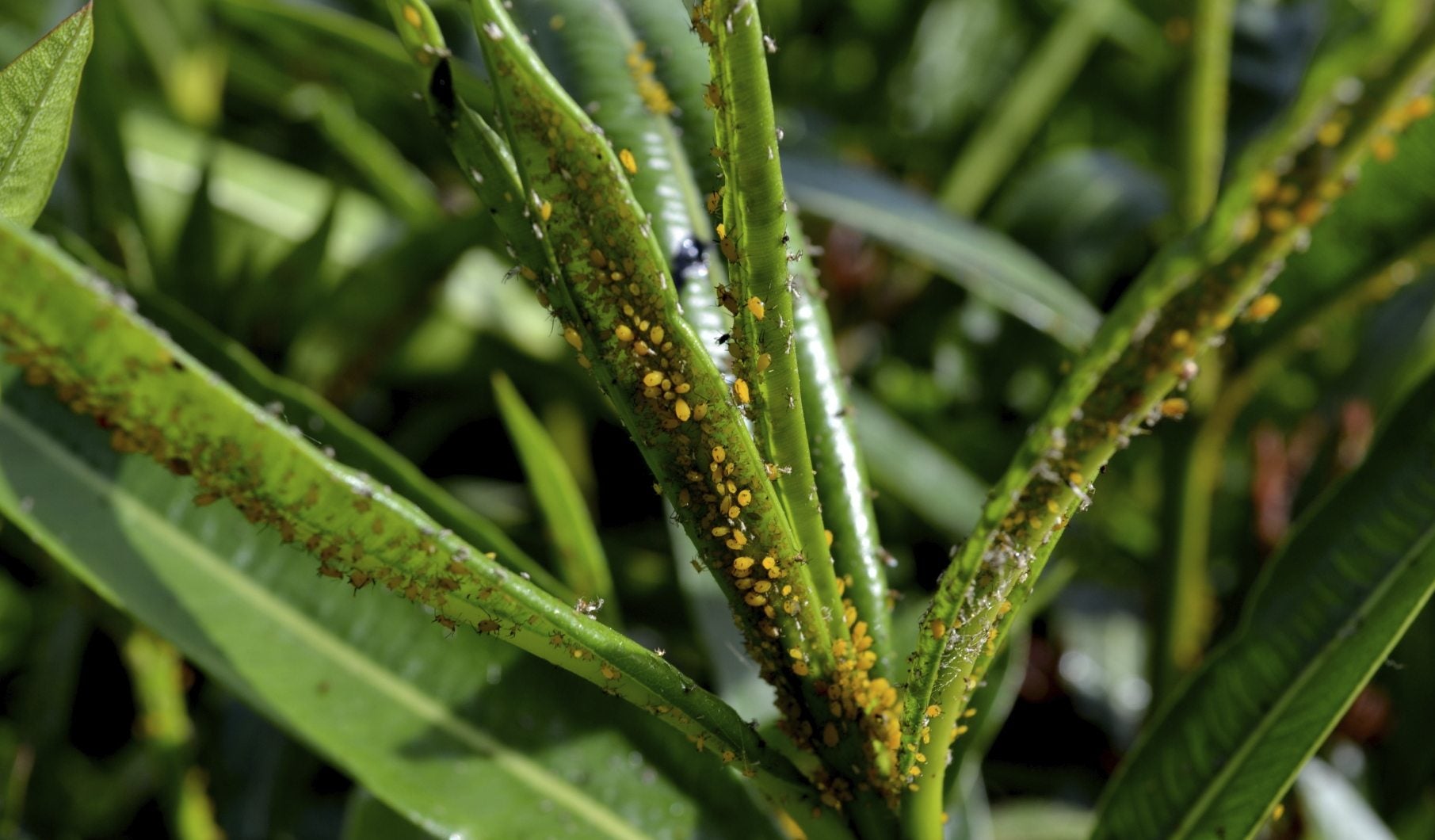Common Oleander Pests: Tips For Treating Oleander Insects


A favorite of warm climate gardeners, Oleander (Nerium oleander) is a hardy evergreen that produces masses of big, sweet-smelling blooms throughout summer and autumn. Oleander is a tough plant that blooms even in drought and punishing heat but, unfortunately, the shrub is sometimes preyed upon by a few common oleander pests. Read on to learn what you can do about oleander plant pests.
Caterpillar Pests of Oleander
Of all the pests of oleander, oleander caterpillar is the most damaging. Oleander caterpillar is the immature stage of the polka dot moth, also known as the wasp moth. The pests, which tend to feed in groups, chew small holes between the leaf veins, and, in severe cases, can completely strip the shrub, removing all of its leaves and small stems. Although the damage is unsightly, an established plant can usually survive the onslaught. However, damage by oleander caterpillars can weaken the plant and make it more susceptible to other pests of oleander. The good news is that the caterpillars – bright orangish red with prominent black tufts – are easy to spot. They are large, measuring up to 2 inches (5 cm.) in length. The safest and most effective way of controlling oleander caterpillars is to simply pick the pests off by hand, then drop them in a bucket of soapy water. If the infestation is severe and manual control measures don’t work, the next step may be the application of bacillus thuringiensis (Bt), a biological control that will kill the caterpillars without harming butterflies and other beneficial insects. Permethrin-based products are also effective. However, control may require repeated applications of Bt or permethrin. If all else fails, a systemic insecticide may be necessary. However, chemicals should always be a last resort.
Other Common Oleander Pests
Oleander is sometimes bothered by scale insects, including armored scales and soft scales. Armored scales are tiny, sucking insects protected by a flat, hard covering. If you remove the covering, the insect will remain on the plant. Soft scales are similar, but the tiny bugs are covered by a larger, more rounded cover. Unlike armored scale, soft scale is attached to the pest. Aphids are very common oleander plant pests that pierce tender plant parts and suck out the sweet juices. Although you might find one or two aphids on a leaf, serious infestations consist of masses of pests, often easily spotted on the underside of leaves. Mealybugs are yet another tiny pest that harms oleander by sucking out the fluids. The pests, which tend to gather in large numbers, are evidenced by their protective covering – sticky, cottony masses seen primarily on stems or leaf joints. Knowing how to get rid of insects on oleander like scale, aphids, and mealybugs is important. While these common oleander pests generally won’t kill a healthy plant, a large infestation can cause stunted growth and yellowing leaves that may drop prematurely. Beneficial insects such as tiny parasitic wasps, lady beetles, and lacewings help keep scale, aphids, and mealybugs in check. This is why the use of insecticides is a very bad idea: the poison kills the beneficial insects along with the pests. Without the beneficial insects, the pests only come back stronger, more abundant, and increasingly difficult to control. Treating oleander insects such as these is usually relatively easy by using horticultural oil during the plant’s dormant season, or soon after the pests become active. You can also use an insecticidal soap or neem oil spray. Regular applications may be required until you gain the upper hand. A systemic insecticide may be necessary if other control measures fail to control a severe infestation. Keep in mind that a healthy, well-cared-for plant is always more pest-resistant. Water, fertilize, and prune as needed.
Sign up for the Gardening Know How newsletter today and receive a free copy of our e-book "How to Grow Delicious Tomatoes".

A Credentialed Garden Writer, Mary H. Dyer was with Gardening Know How in the very beginning, publishing articles as early as 2007.